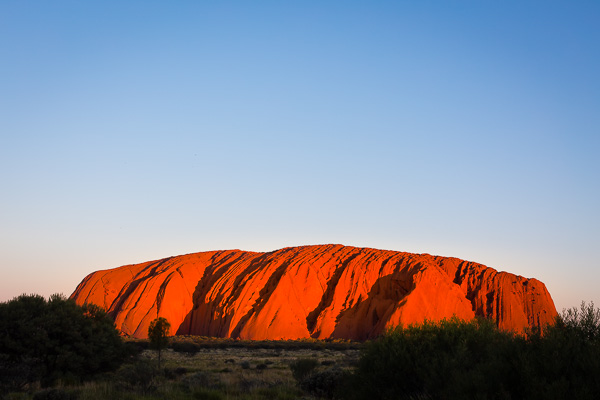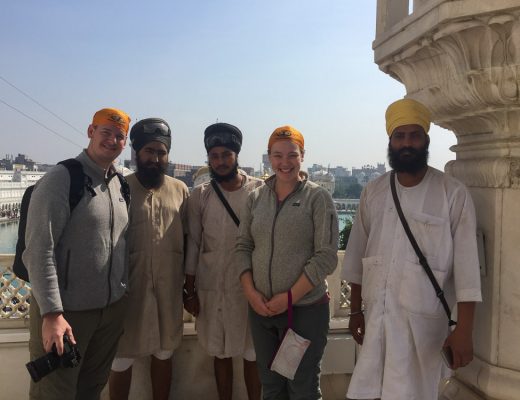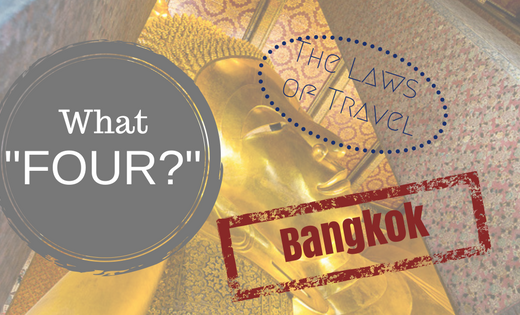We knew we wanted to visit Uluṟu. It is, after all, a sacred site for the Aboriginal people of Australia and we wanted to learn more about it along with the people whom it meant so much too. Yet, when we tried to find resources about how to visit Australia’s Red Center without going on a guided tour, there wasn’t much we could find. Below is the itinerary we came up with for our self guided tour, with a few suggestions on things to consider before booking your trip.
Six Days in Australia’s Red Center Without a Guide – Itinerary
Day 1 – Arrive in Alice Springs
The only thing that you absolutely have to do on day one is pick up your rental car.
We spent several days in Alice Springs waiting for our friends to arrive and there is a fair amount of activities available. The Botanical Gardens are really pretty, there are many hikes and lookouts, and there are several good cafes and restaurants to try.
Day 2 – Drive to Uluṟu-Kata Tjuṯa National Park
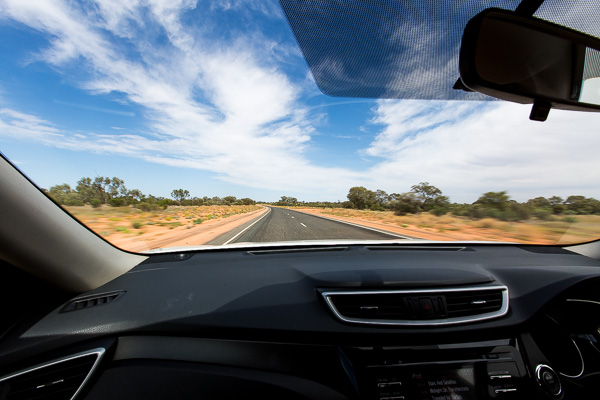
The view from our rental car on the drive between Alice Springs and Uluru.
Get up and on the road early and drive to Uluṟu-Kata Tjuṯa National Park. On the way, stop for coffee, food, and gas at some of the road houses. You will probably find interesting things to buy – kangaroo tails anyone? – and see some Emus while you are there.
You will also have the chance to see Mount Connor on your drive. Don’t be fooled, it isn’t Uluru but it is still quite impressive. Stop and take some pictures but don’t plan on seeing it up close unless you book a private tour with the family who owns the land that Mount Connor stands on.
When you get to the Ayers Rock Resort, check in to your accommodation, and then relax for a bit before your evening sunset camel ride with Uluru Camel Tours. If you aren’t tired, you could take a walk around the resort and head up to the lookout to get a great view of Uluṟu or over to the Cultural Centre to enjoy learning more about the history of Uluṟu-Kata Tjuṯa National Park.
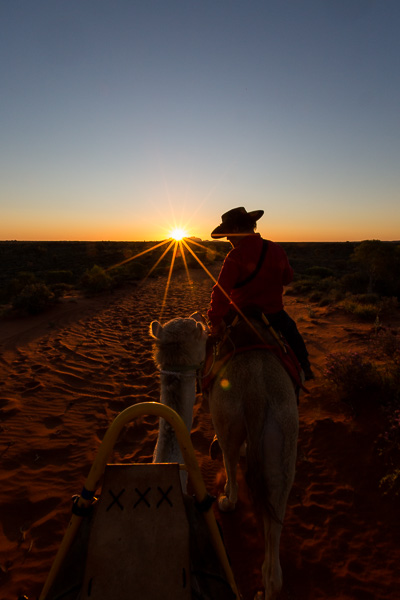
Sunset Camel Ride in Uluru, I don’t think it could’ve been prettier.
Day 3 – Uluṟu
Get up early and drive to the park for the ranger-guided Mala Walk. The walk starts at 8am from October – April and 10am May through September. During the 90-minute tour, the ranger will tell you about the mala people and traditional Anangu culture. You will see rock art, a waterfall, and learn some of the sacred stories that make Uluṟu such a special place. The 2 km return walk is flat and wheelchair accessible, so people of any age and ability can enjoy this tour.
Once the Mala Walk has completed, and depending on the temperature, we would recommend doing the Uluṟu Base Walk. It is 10.6 km, but the terrain is flat. As long as you have water, snacks, and a fly net, this 3.5 hour hike is well worth it.
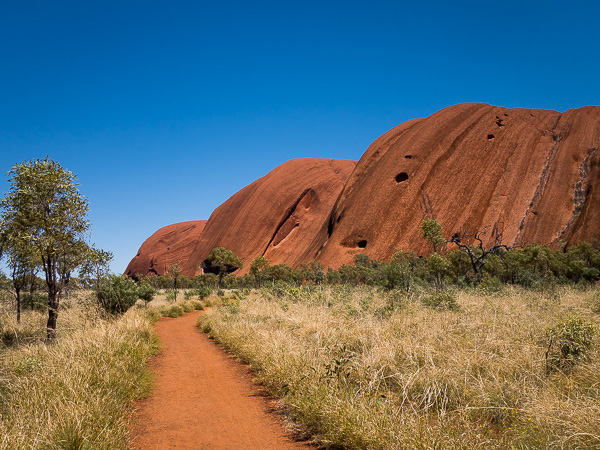
View of the path for the Uluru Base Walk. It isn’t strenuous, but it is beautiful.
Once you have completed your base walk, head back to the resort and relax in the air con during the afternoon heat. That way, you will feel refreshed for your Field of Light tour that evening during sunset. There are also a bunch of activities that you could sign up for if you don’t want to rest.
Day 4 – Kata Tjuṯa
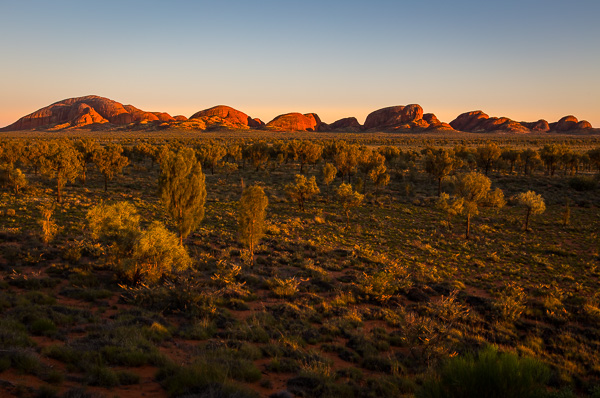
Kata Tjuta glowing at sunrise.
It’s another early morning since you want to get into Uluṟu-Kata Tjuṯa National Park before the sun rises. Depending on the season, the gates open at different times, but you want to be there early to beat the tour buses that bring hundreds of people to view sunrises. Drive to the Kata Tjuṯa Dune Walk viewing area for an incredible sunrise view. Watch the sun rise behind Uluṟu, leaving it in silhouette, and cast rays on Kata Tjuṯa making its 36 domes glow.
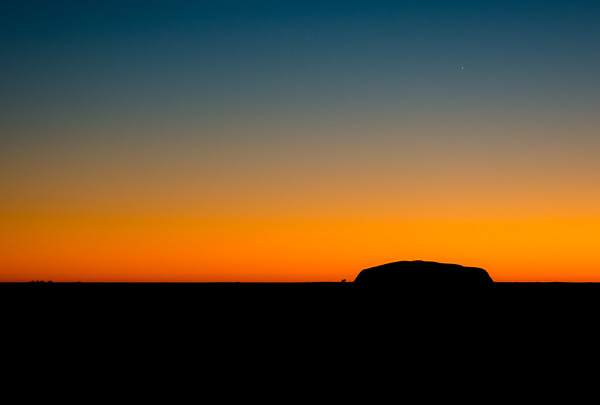
Uluru in silhouette at sunrise.
Once the sun has appeared, head to the Walpa Gorge Walk to take in the beautiful views before the buses get there. This short 1 hour return, 2.6 km hike is more challenging than the base walk from Day 3, since you are actually climbing some rocks, however it still wouldn’t be too challenging for those who can walk up a few flights of stairs.
Then, it is time to head to The Valley of the Winds Walks. This is the most challenging of the hikes that we did in Uluṟu-Kata Tjuṯa National Park, but we saw people of all ages and fitness levels tackling this hike. It was also the most beautiful hike that we did in the park. There are three options for this walk. You can visit the Karu Lookout and then turn around (2.2 km return, 1 hour), or you can walk to the Karingana Lookout and then turn around (5.4 km return, 2.5 hours), or you can walk the full circuit (7.4 km, 4 hours). We walked to the Karingana Lookout and then turned around since the heat of the afternoon was kicking in.
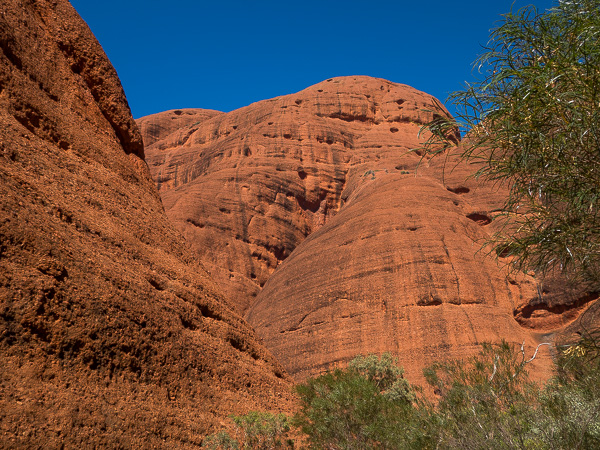
A view of the huge domed rock formations that make up Kata Tjuta from The Valley of the Winds walk.
Spend the afternoon relaxing after your active morning or do some of these activities if you don’t want to rest. There are also some dot painting classes which look great, but be sure to book early.
Check the sunset time and head back into the park about 90 minutes before the sun sets to catch the incredible show that Uluṟu puts on each night. Head to the Car Sunset Viewing Area with your camera and relax as the rock changes colors in front of your eyes.
Day 5 – Kings Canyon
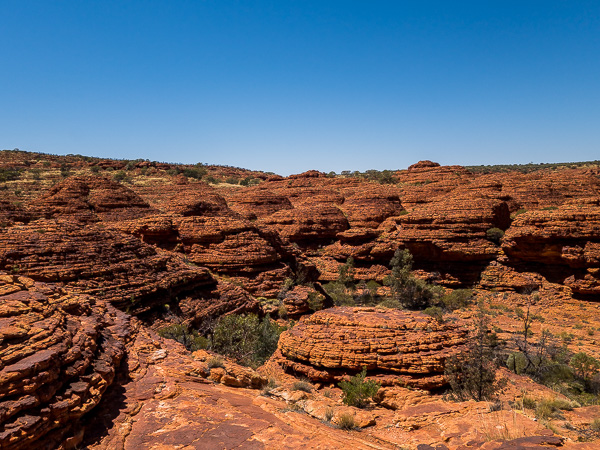
The rock formations at Kings Canyon are otherworldly.
Get up early and get on the road for your three hour drive to Kings Canyon. Beware, Google will tell you that it takes nearly five hours to drive between Ayers Rock Resort and Kings Canyon, but they are wrong. We didn’t speed and got there in just over three hours.
When you arrive, pick a hike. We recommend the South Wall Return Walk (2 hours) which offers incredible rock formations and views of the canyon, and takes half of the time of the full rim walk (6 km, 3.5 hours). Please note that there are a lot of stairs in either the South Wall Return Walk, or the full King Canyons Rim Walk, so you should be in moderate physical shape.
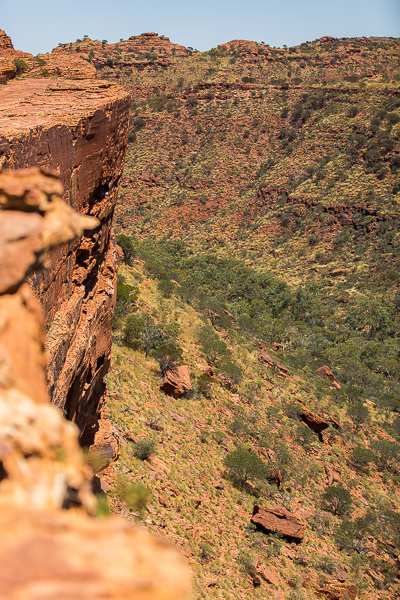
View into the canyon from the rim walk.
We actually drove back to Ayers Rock Resort after finishing our hike, but you could also stay near Kings Canyon if you wanted to save yourself a drive.
Day 6 – Drive back to Alice Springs/Ayers Rock/Fly Home
Depending on how you have scheduled your travel, spend this day driving back to Alice Springs, or Ayers Rock Resort, and fly home.
Things to Know Before your Trip:
First of all, be sure to book early. We booked just a few weeks before visiting Uluṟu and were shocked that the campground was booked for the entire year! We literally got the last “hotel” room in the Ayers Rock resort for the days we were staying and ended up reminiscing about our college dorm days because our lodging was bunk beds in a small room.
We started our trip in Alice Springs, but you don’t have to. There is an airport very close to Uluṟu-Kata Tjuṯa National Park called the Ayers Rock Airport.
You also don’t need a 4×4 in order to see Uluṟu-Kata Tjuṯa National Park and Kings Canyon. There are some roads that we weren’t allowed to drive on, but missing them didn’t hinder our experience.
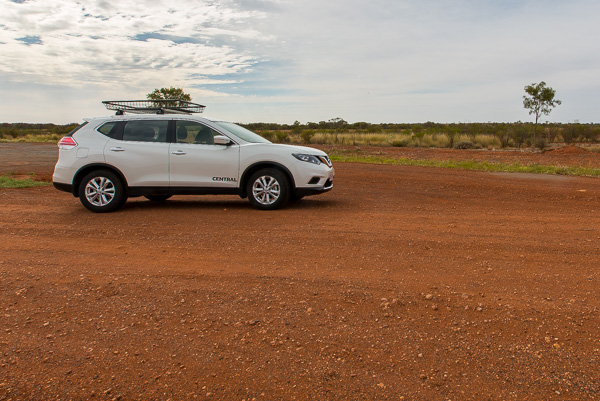
Our car that we rented in Alice Springs. Contrary to the picture, it didn’t have a tree growing out of its roof.
We also found our entire trip to Uluṟu-Kata Tjuṯa National Park and Kings Canyon was extremely expensive. We were fortunate that we went with friends and could split the rental car and hotel fees in half, but even still we totally blew our budget. This was largely due to booking a hotel room instead of camping so, once again, we can’t stress the importance of booking early enough.
We had read that renting a car in Alice Springs or from Ayers Rock Airport could include hidden fees, so we went with a local car company, Central Car Hire that came recommended as not having hidden fees and allowing unlimited kilometers. Our experience with Central was great and we would highly recommend them. When it comes to gas, you should also note that there is a Red Centre Tax per liter of gas, making it significantly more expensive than much of the rest of the country.
When we visited Uluṟu-Kata Tjuṯa National Park in October 2016, we paid $25 per person for a 1-3 day park pass. Kings Canyon was free.
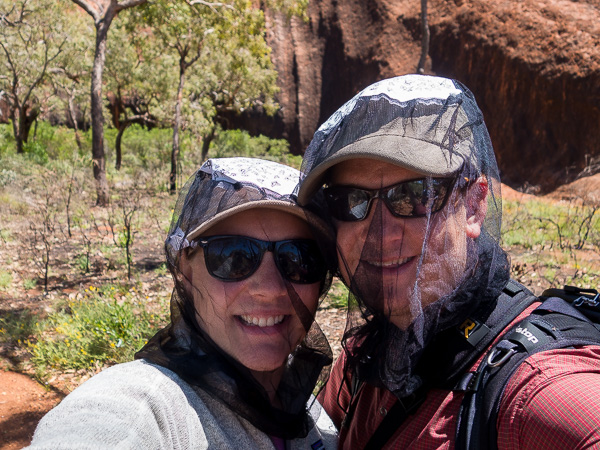
We have never ever experienced flies like we did in the Northern Territory. There would be dozens of flies on us at once and if we didn’t have nets on they would be in our eyes, ears, mouths, and noses. So gross!
Finally, when preparing for the Red Centre, make sure to bring lots of layers. When we woke up for the sunrise it was 6 degrees Celsius (43 Fahrenheit), and within a couple hours it was 29 degrees Celsius (85 Fahrenheit). You should also buy a fly net, because the flies in the Red Centre are more aggressive and plentiful than you have probably ever experienced before.
